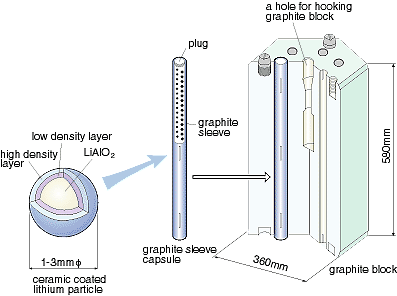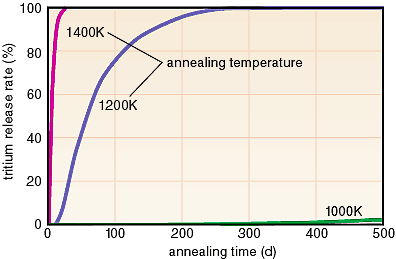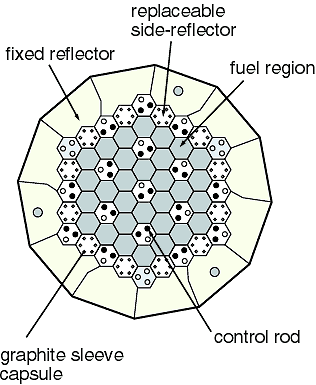A method for producing tritium using the High Temperature Engineering
Test Reactor (HTTR) is proposed. From the viewpoint of chemical
stability, particles which have LiAlO2 as a nucleus and coatings of ceramics such as Al2O3, SiO2 and ZrO2 are used as shown in Fig. 7-1. The coated particles are produced
by the same method as the coated particle fuel for the HTTR. In
the case of coating by Al2O3, for example, double coating is conducted. It was found that
when the coated particles were irradiated below 1,000 K little
tritium comes out after heating at 1,000 K but is easily released
after heating above 1,400 K, as shown in Fig. 7-2. It was confirmed
that no chemical reactions of the ceramic coating with the nucleus
occur and the coated particles are chemically stable at temperatures
which are expected to be in the irradiation range of coated lithium
particles. Moreover, the tensile strength of the second coating
layer is predicted to be maintained up to 1,100 K. It is necessary
to confirm the mechanical integrity by actual irradiation tests
in the future. Figure 7-3 shows the position of the irradiation
test in the in-core section of the HTTR.
Coated lithium particles are used in the blanket of a fusion reactor
to produce tritium. |


